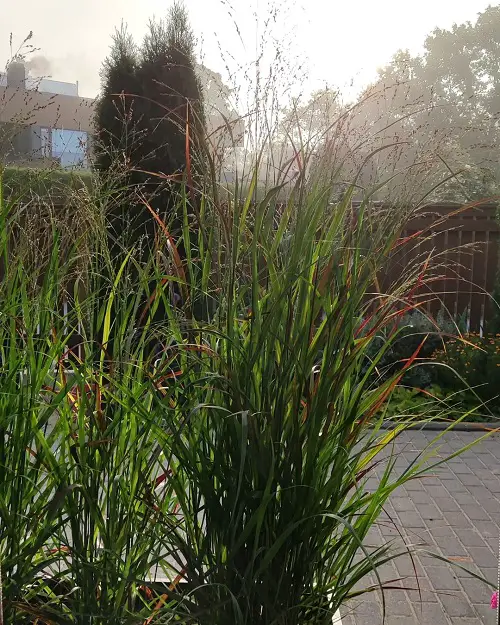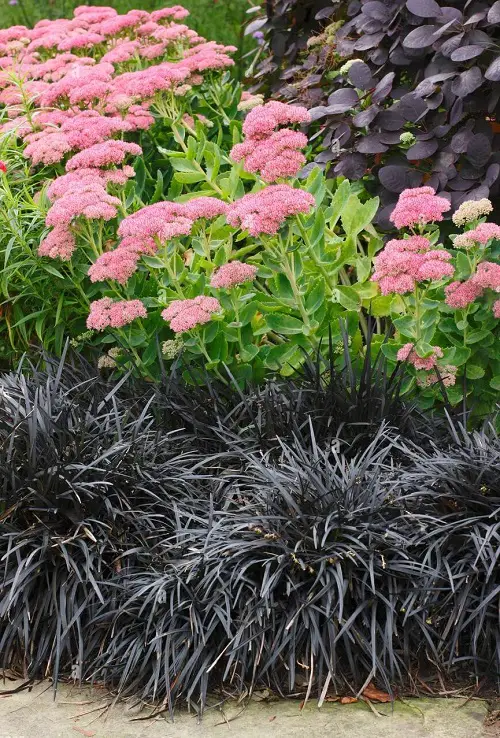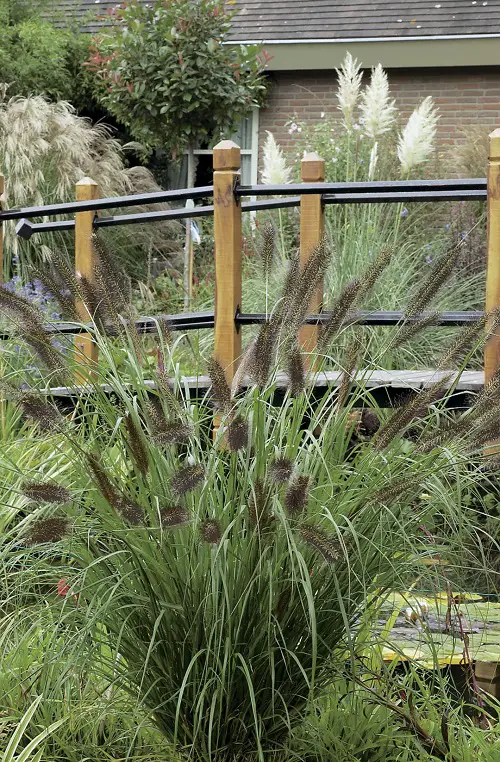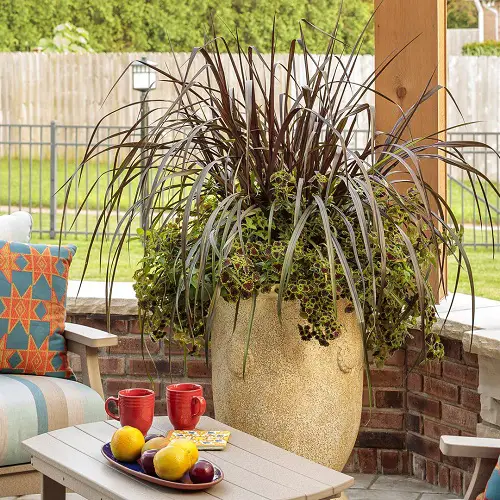Check out the Best Black Grasses for Landscaping and Containers you can use to add a mysterious appeal to your garden!
Here are some amazing specimens, popular for their dark, almost black foliage. You may provide a stunning contrast to other plants and flowers by growing these Best Black Grasses.
Find the Best Ornamental Grasses for Shade
Best Black Grasses for Landscaping and Containers
1. Black Mondo Grass
Botanical Name: Ophiopogon planiscapus
USDA Zones: 6-11
Black Mondo is a popular black grass that is well-suited for container gardening. It grows to about 6 inches and has striking, deep purple-black foliage.
2. Black Fountain Grass

Botanical Name: Pennisetum alopecuroides ‘Moudry’
USDA Zones: 5-9
If you want a taller option, go with Black Fountain grass. It can easily reach 2 feet and is also drought tolerant. Just give it moist soil and full sun, and it’ll thrive.
3. Black Beauty Dwarf Fountain Grass
Botanical Name: Pennisetum alopecuroides ‘Black Beauty’
USDA Zones: 4-11
This one’s more of a compact ornamental grass, but don’t let that stop you from growing it in the garden. It has lovely dark foliage and fluffy seed heads with slender stems.
4. Black Knight Butterfly Bush
Botanical Name: Buddleja davidii ‘Black Knight’
USDA Zones: 5-9
Black Knight Butterfly Bush has beautiful foliage and purple flower spikes. It also attracts butterflies, bees, and even hummingbirds.
5. Blackout Switch Grass

Botanical Name: Panicum virgatum ‘Blackout’
USDA Zones: 3-9
Blackout Switch Grass will work as an ornamental piece and also add a bit of privacy to the lawn with its towering foliage. It also produces airy, pink-tinted flowers in the summer.
Look at some Stunning Tall Grasses for Privacy
6. Purple Fountain Grass
Botanical Name: Pennisetum setaceum rubrum
USDA Zones: 7-11
Pennisetum setaceum rubrum display arching purple flower spikes and dark foliage in purple-burgundy shade that appears almost black.
7. Cheyenne Sky
Botanical Name: Panicum virgatum ‘Cheyenne Sky’
USDA Zones: 4-9
Cheyenne Sky flaunts dark green foliage in spring and summer but spruces up the garden with its lovely gray/brown/pink flower panicles in late summer, turning a bit darker in hue.
8. New Zealand Flax
Botanical Name: Phormium ‘Platts Black’
USDA Zones: 7-11
This sword-leaf evergreen perennial is known for its dark purple leaves. New Zealand Flax also used to make bird snares, ropes, nets, clothing, mats, and more.
Tips for Growing Black Grass
1. Soil
Most of these grasses need well-drained soil, so it’s essential to add organic matter like compost to the soil before planting them.
2. Sun Exposure
Don’t skip on the sun exposure as black grasses need full sun to partial shade; otherwise, they won’t showcase their true colors.
3. Watering
Grasses are drought tolerant once established, but that doesn’t mean you can stop watering altogether. Give them regular watering for the first few weeks and then decrease the frequency. But DO give them water.
4. Fertilization
You can supply nutrients all through the growing season by using a slow-release fertilizer in the spring if you want, but even if you skip it, it won’t matter much as they need little fertilizer.
5. Maintenance
Even if you’re growing them for a lush display, deadheading or cutting back the grass in the fall can help promote healthy and bushier growth in the following year. So don’t skip this.









